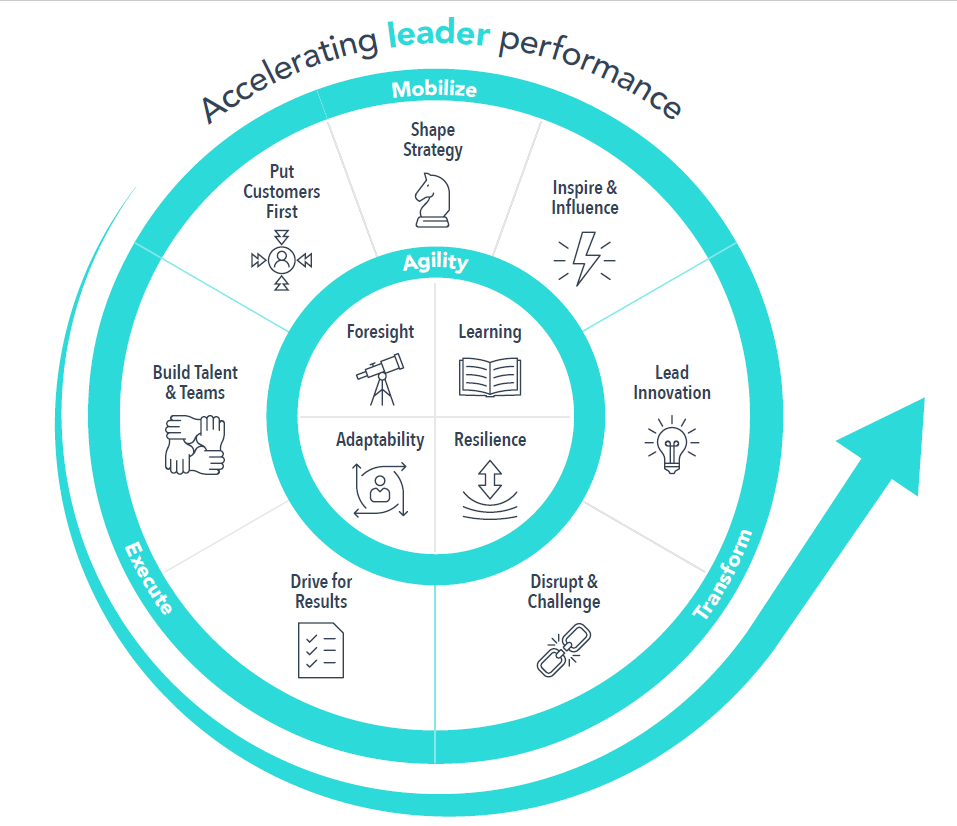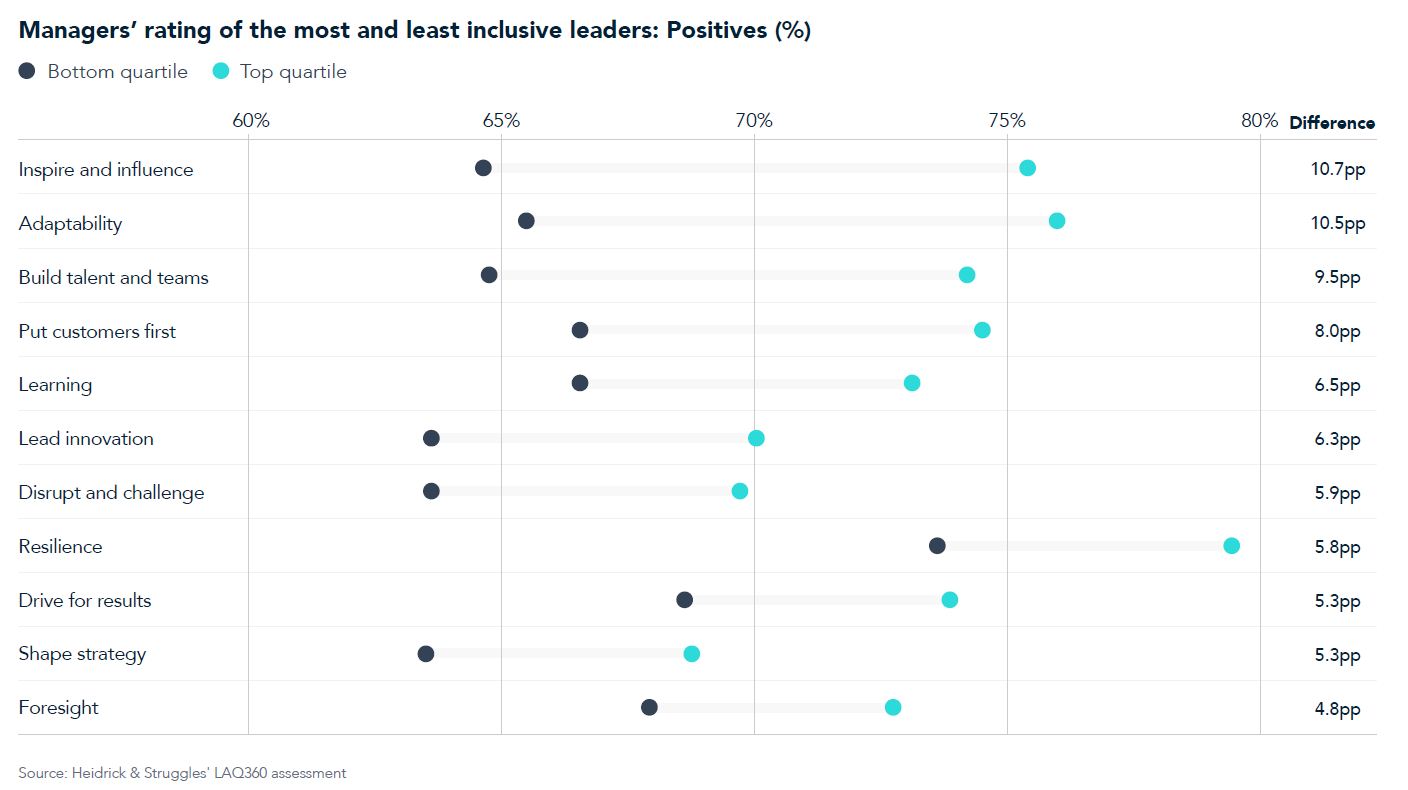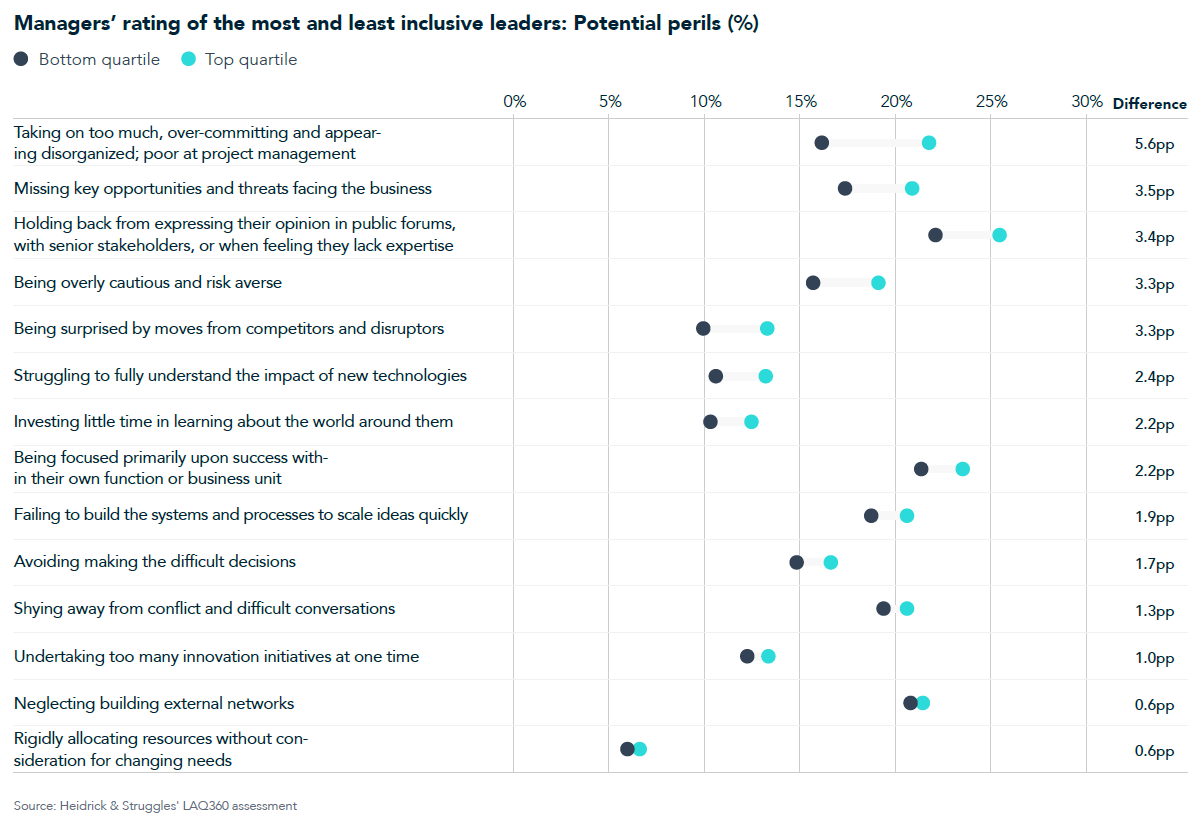Inclusive Leadership
Inclusive leadership: Finding the right balance
Inclusion matters more than ever to organizations of all kinds. A recent survey conducted by Heidrick & Struggles shows that 93% of executives from eight countries around the world said diversity, equity, and inclusion matter more to their company now than in early 2020—and employees are the most cited reason why.1 Inclusion is at the core of thriving cultures, which engage and retain employees in the face of fatigue, changing priorities, and burnout.2 Companies that are making the most progress on DE&I, our work shows, make an intentional commitment to clarity and culture to create a systemic, whole-company focus on inclusion. And leaders, at all levels, are at the heart of shaping, maintaining, and role-modeling inclusion.
But what exactly do inclusive leaders do? How does being inclusive help them and their organizations? And do they run a risk of underemphasizing other important leadership capabilities when they focus on inclusion? Our analysis of more than 30,000 surveys of leaders and their colleagues—managers, peers, and team members—fielded over the past few years highlights the key differences in how leaders who are perceived as inclusive behave. It also shows that leaders who are rated by their teams as most inclusive are rated higher than others across the board by their managers.
However, managers also highlight a few risks when leaders are particularly inclusive: perceptions that they are overly cautious, risk-averse, or too focused on internal dynamics rather than external ones. That being said, internally, 52% of executives surveyed see DE&I efforts as significant contributors to business success, and more cite employees as the core drivers of that success than any other factor, our survey shows.3
Our analysis looks at 33 aspects of leadership, which contribute to 11 drive factors that, together, help leaders mobilize their organizations so they can execute and transform with agility.
We have found that the leaders considered most inclusive by their teams do three things particularly well: they build deep purpose and engagement, create a deep sense of belonging, and value individuality.4 To do so, the following five behaviors are central:5
- Attract followers
- Adapt their style easily to respond to the demands of different situations
- Foster collaboration among teams to create and implement new ideas
- Lead primarily through influence rather than authority—yet know when and how to make effective use of positional power
- Adapt and transform their approach to leadership
And these behaviors don’t only create collaborative, engaged, productive teams. The managers of the most inclusive team leaders rate those leaders higher across the board, on all 11 drive factors and all 33 energizers that underlie them.
The biggest positive difference in the underlying energizers is in empathy, which contributes to adaptability. More broadly, we know that empathy is a crucial part of leading with humanity and building connections in uncertain times and frequently changing conditions. The other two behaviors with the largest differences are developing leaders—which is, of course, an important part of building teams—and engaging and energizing the organization, which contributes to being inspiring and leading through influence.
It’s notable that the differences between the most inclusive leaders and the least are smallest on behaviors related to transformation, and that the most inclusive leaders are more often rated by their managers as appearing disorganized, missing key opportunities, and holding back from expressing their opinions.
Inclusion is central to good leadership today. But it is important for leaders to remember that inclusion doesn’t mean being liked, or that everyone gets to have a voice all the time. Even the most inclusive leaders must be able to comfortably exercise their authority to make executive decisions—but they must also make sure their teams know when, why, and what the effects of those decisions will be. How they do that needs to vary, since each person and each team need to be led differently; inclusive leaders can draw on their ability to adapt to succeed. Inclusive leaders should actively seek the right balance, for themselves and their organizations, between internal and external, keeping in mind how and why diversity, equity, and inclusion are important to their organization’s purpose and long-term business success. That right balance for each leader, and each organization, will be different, and it is only by finding their unique balance that leaders can ensure they and their organizations continue to reap the benefits.
Acknowledgments
The authors wish to thank Jonathan McBride for his contributions to this article.
About the authors
Paul Gibson (pgibson@heidrick.com) is a partner in Heidrick & Struggles’ New York office and a member of the Financial Services Practice.
Ryan Pastrovich (rpastrovich@heidrick.com) is senior director, data science, for Heidrick Digital Laboratories (HD Labs); he is based in the Chicago office.
Karen Rosa West, PhD (kwest@heidrick.com) is a partner in Heidrick & Struggles’ Chicago office and head of psychology, product research, and design for Heidrick Digital Laboratories (HD Labs).
References
1 Jonathan McBride, Employees at the Center: What It Takes to Lead on DE&I Now, Heidrick & Struggles.
2 For more, see Rose Gailey and Ian Johnston, Future-Focused: Shape Your Culture. Shape Your Future, Chicago: Networlding Publishing, 2021.
3 Jonathan McBride, Employees at the Center: What It Takes to Lead on DE&I Now, Heidrick & Struggles.
4 For more, see Alice Breeden and TA Mitchell, “Six actions leaders can take to nurture inclusive teams,” Heidrick & Struggles.
5 For more, see Karen Rosa West and Megan Herbst, “What inclusive leaders do—and don’t do,” Heidrick & Struggles.


